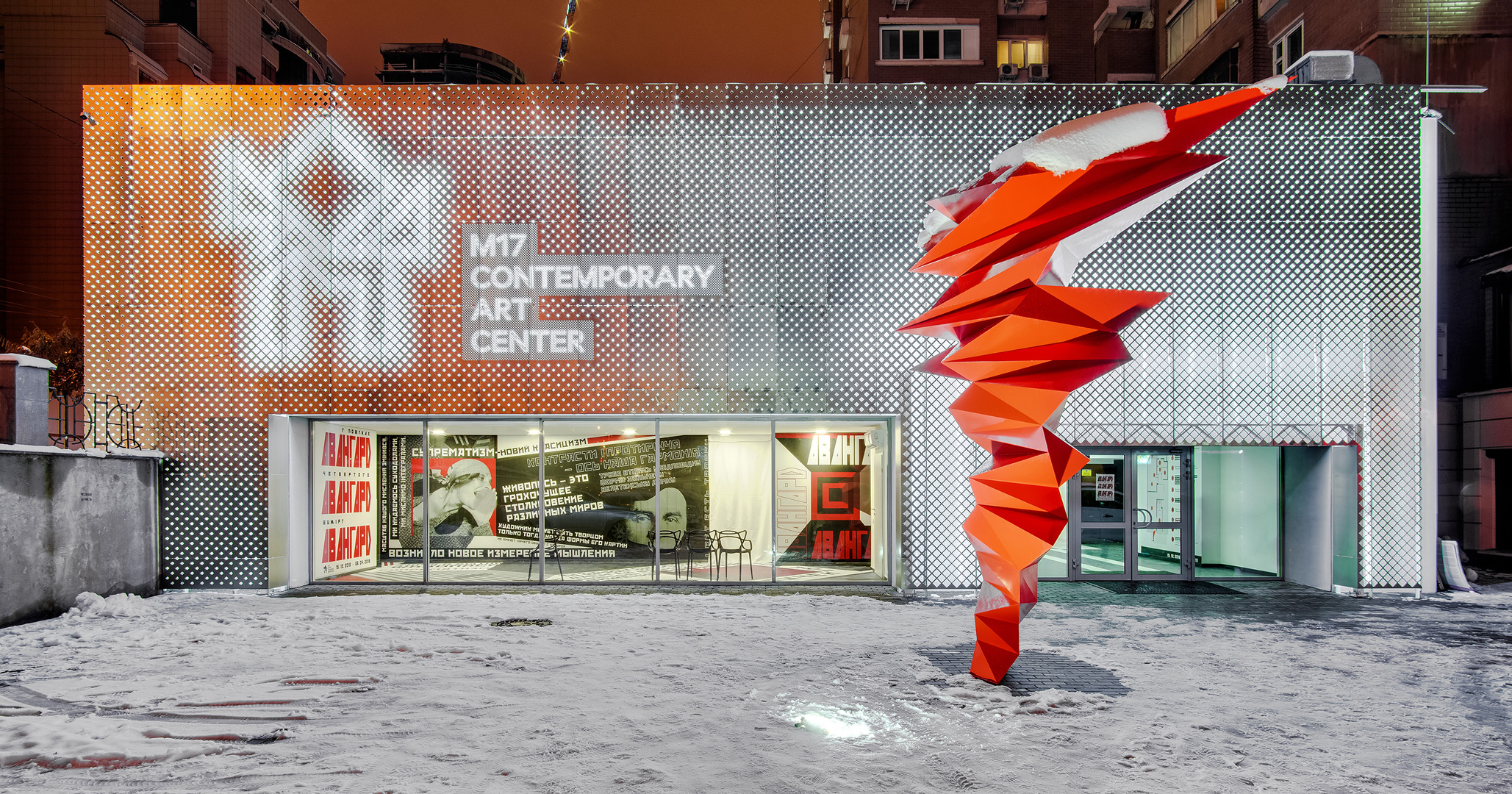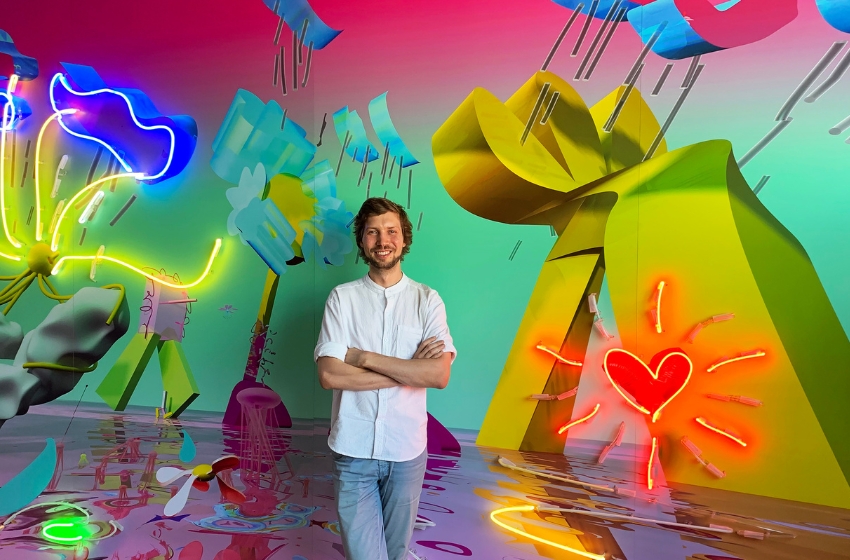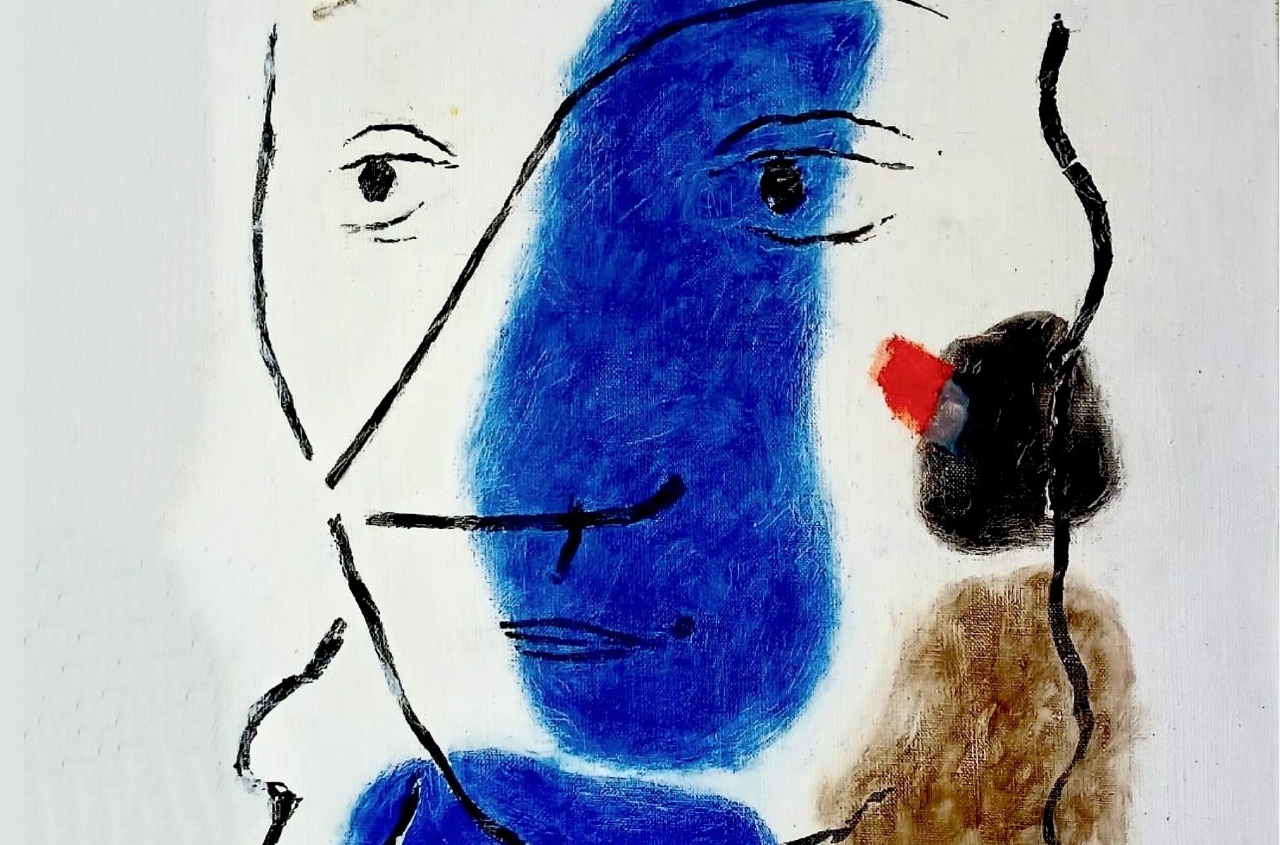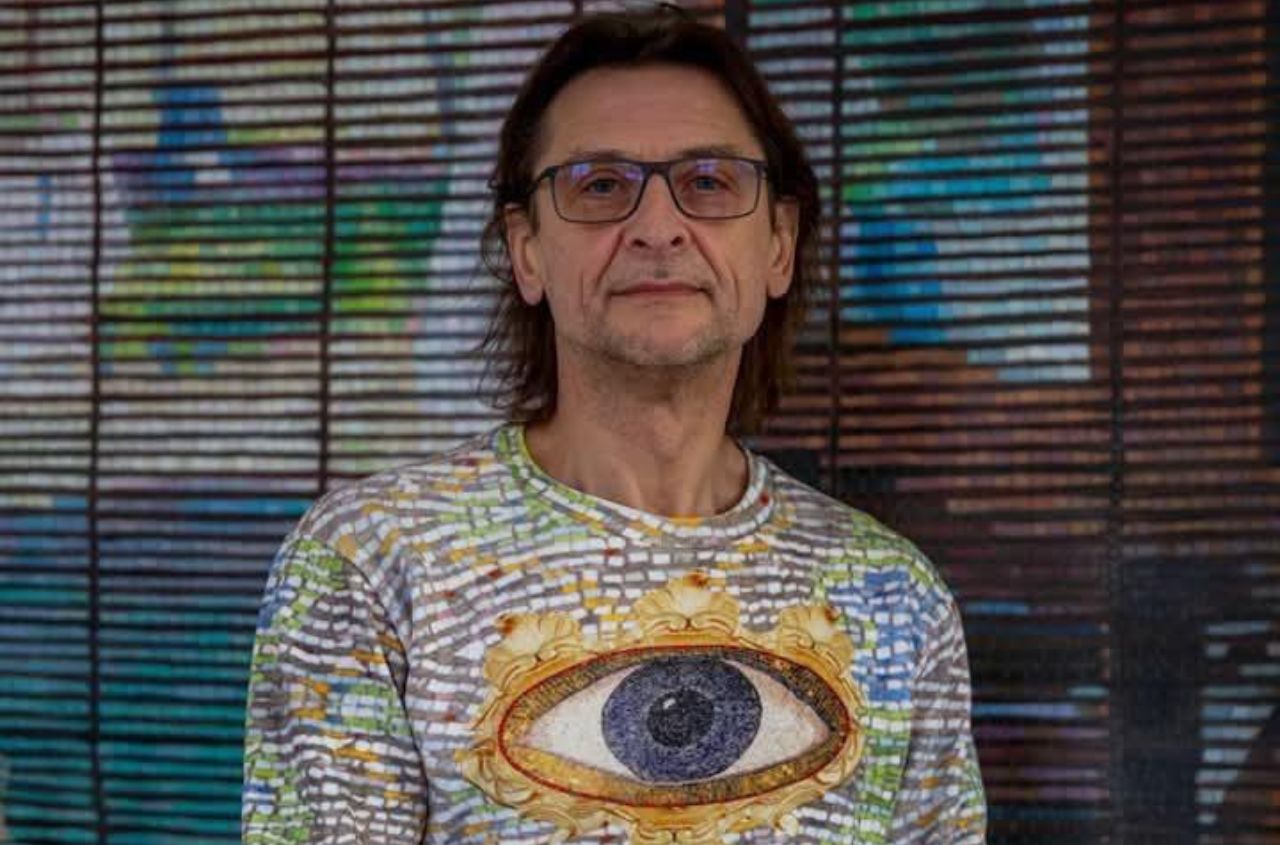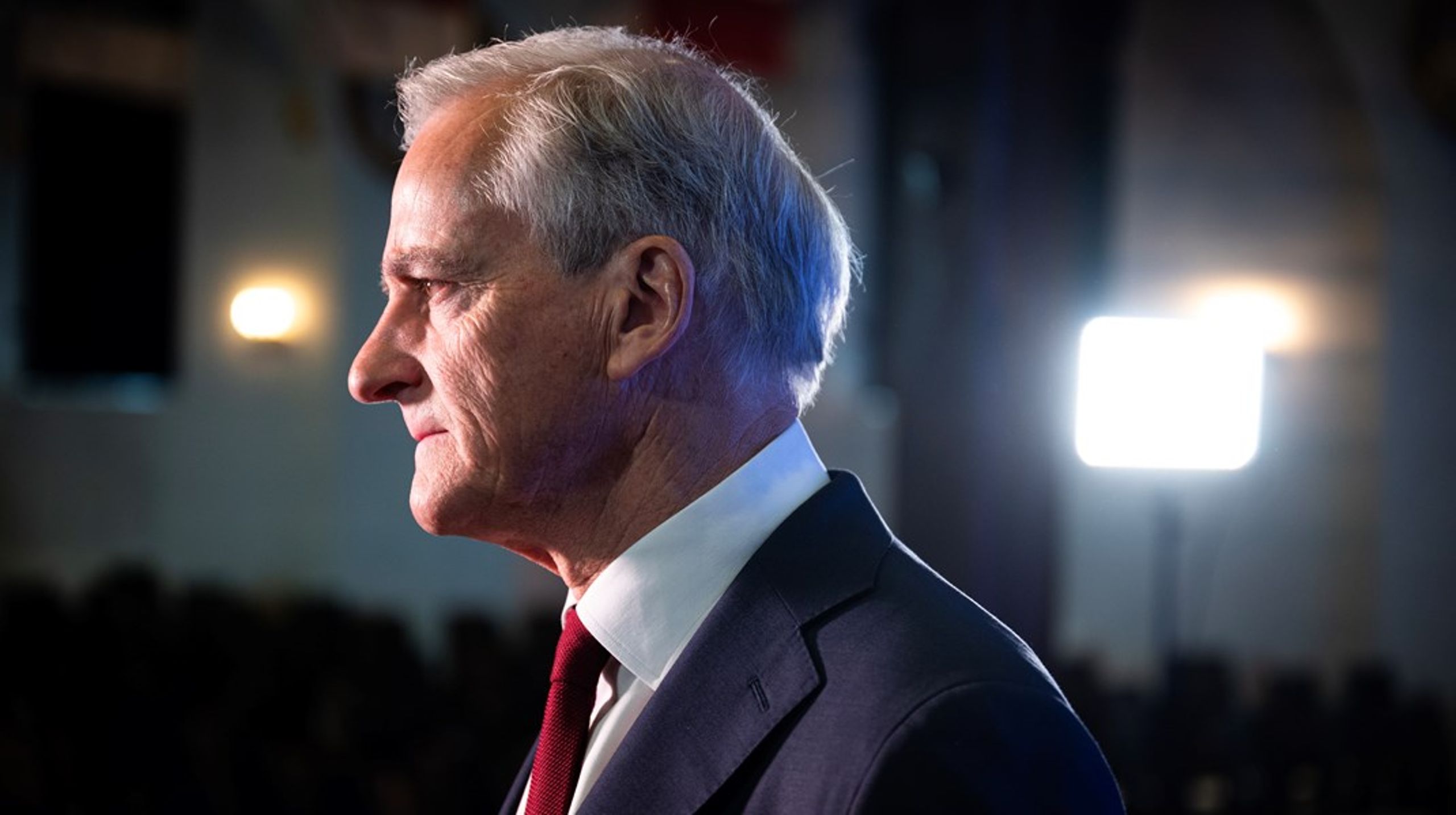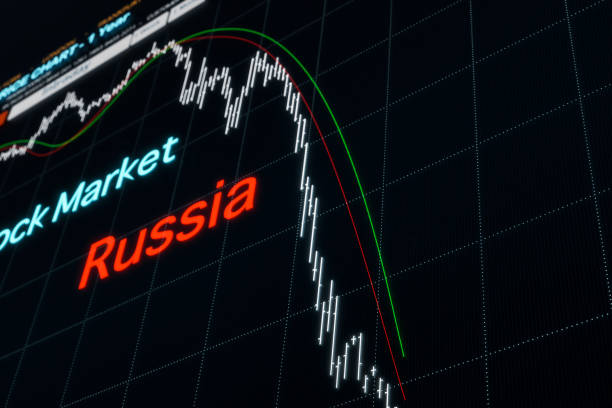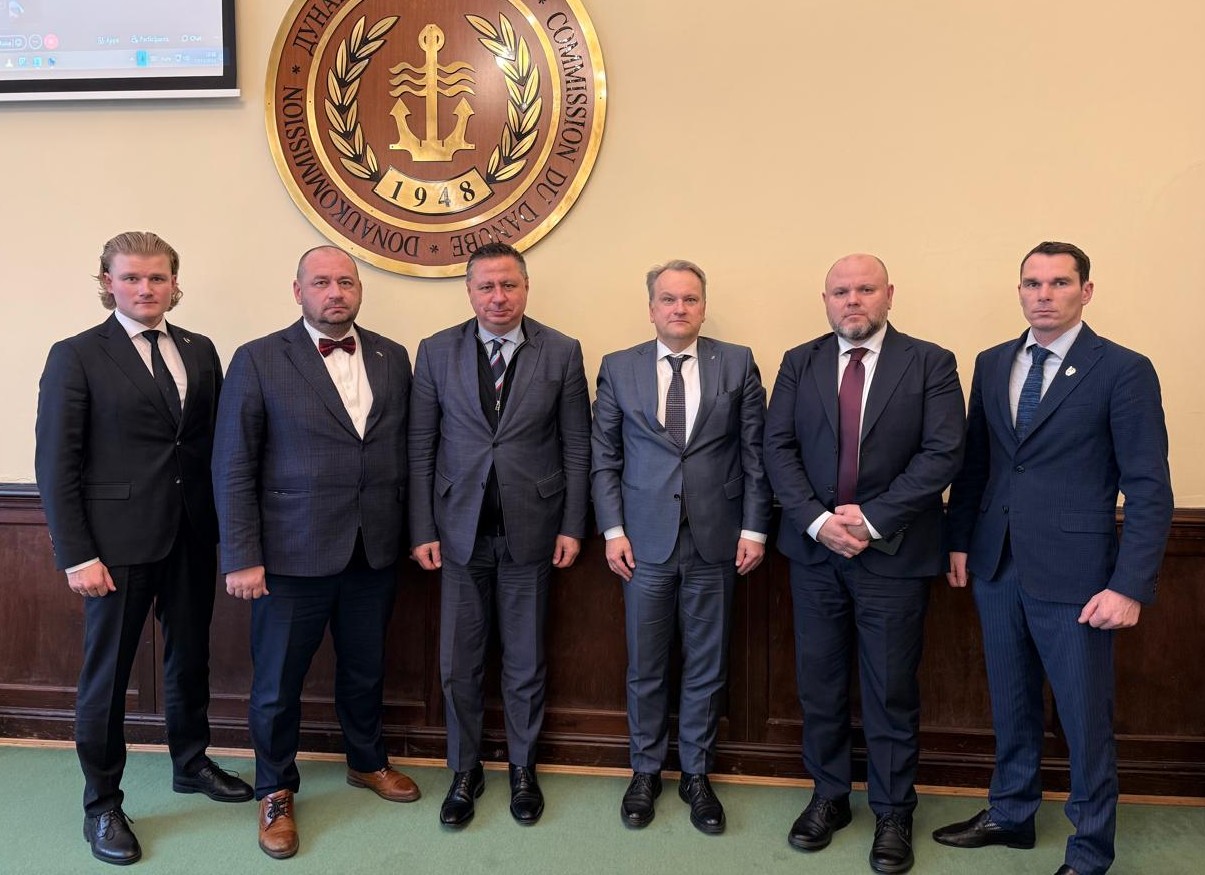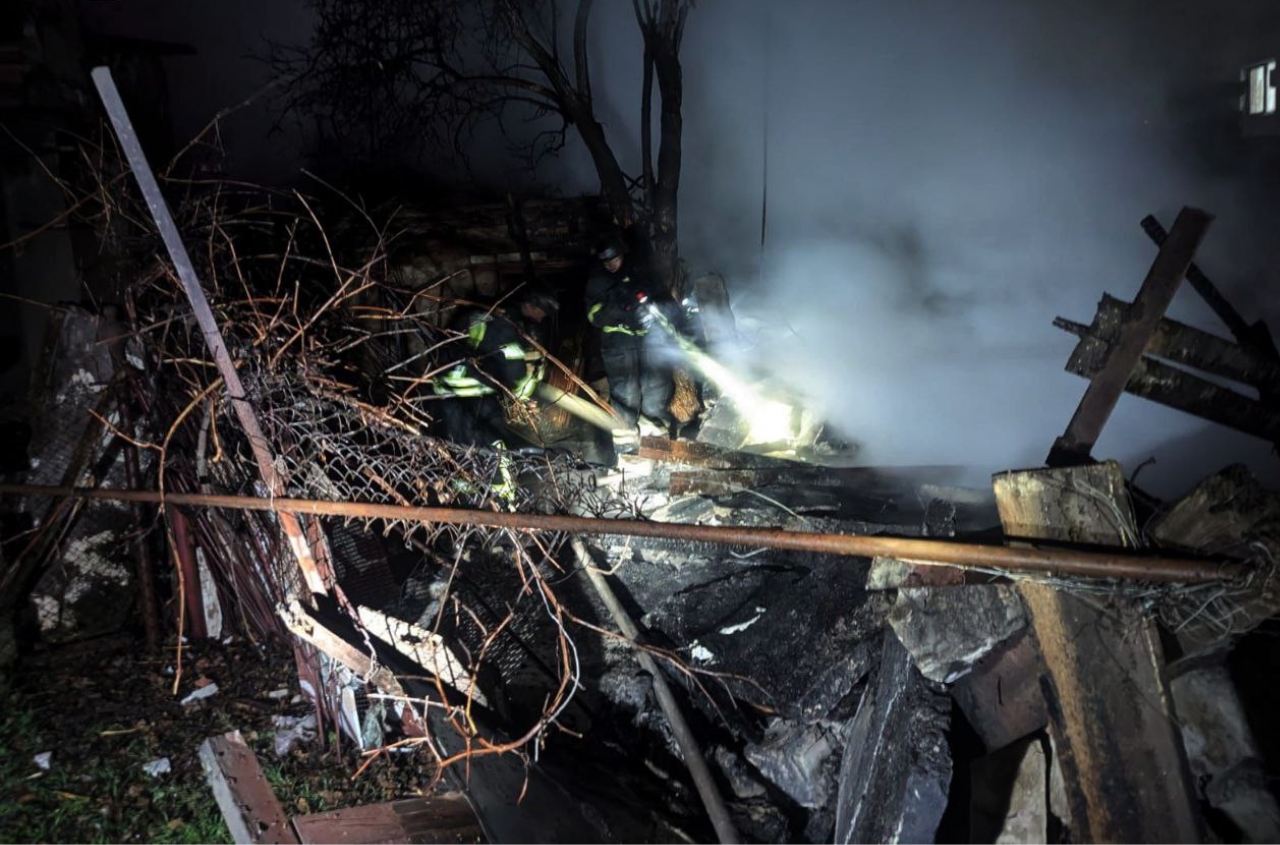Main image: Stepan Ryabchenko in front of his work. Photo by Juliia Abramovych
At the XXX General Assembly of the National Academy of Arts of Ukraine, held in Kyiv on July 3–4, 2025, Odessa-based artist Stepan Ryabchenko was elected as a corresponding member of the Department of Fine Arts. He became the youngest member of the Academy’s current composition and its only representative from Odessa — a landmark event not only for the artist himself but for the entire cultural community of the city and the country.
Founded in 1996, the National Academy of Arts of Ukraine is the country’s leading state institution in the field of culture, bringing together the most prominent Ukrainian artists, scholars, and educators across music, painting, graphic art, theater, film, architecture, and art history. With its national status, the Academy fulfills expert, scientific, educational, and exhibition roles — supporting both the preservation of tradition and the development of contemporary artistic practices.
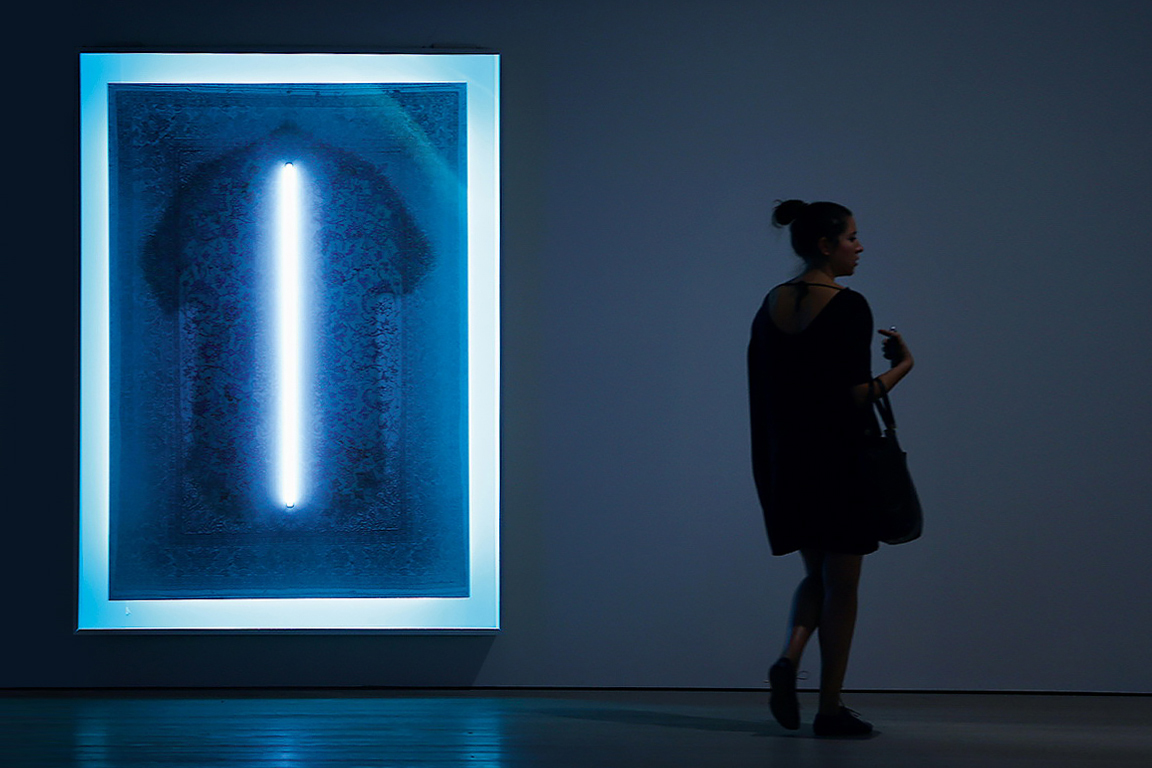
Among the Academy’s members are key figures of Ukrainian cultural life: Valentyn Sylvestrov, one of the most influential contemporary composers and a representative of the Kyiv avant-garde; Myroslav Skoryk, a reformer of academic music and author of the famous Melody; Yurii Illienko, a classic of Ukrainian poetic cinema and cinematographer/director of Shadows of Forgotten Ancestors; Mykola Storozhenko, painter and monumental artist, author of the murals in St. Michael’s Golden-Domed Monastery; Vasyl Lopata, engraver and illustrator of the Kobzar, who also designed Ukraine’s first banknotes; Pavlo Makov, graphic artist and creator of the Fountain of Exhaustion presented at the Venice Biennale; Anatolii Kryvolap, a visionary painter who redefined the language of color and landscape; Oleh Tistol, a leader of the Ukrainian New Wave working with national identity; TiberiiSilvashi, a leading Ukrainian abstractionist; Victor Sydorenko, artist and founder of the Modern Art Research Institute of the Academy; and Dmytro Horbachov, the foremost researcher and popularizer of the Ukrainian avant-garde, who brought names like Boychuk, Ekster, Palmov, and Bohomazov back into cultural circulation — among many other figures shaping the intellectual and artistic landscape of Ukraine.
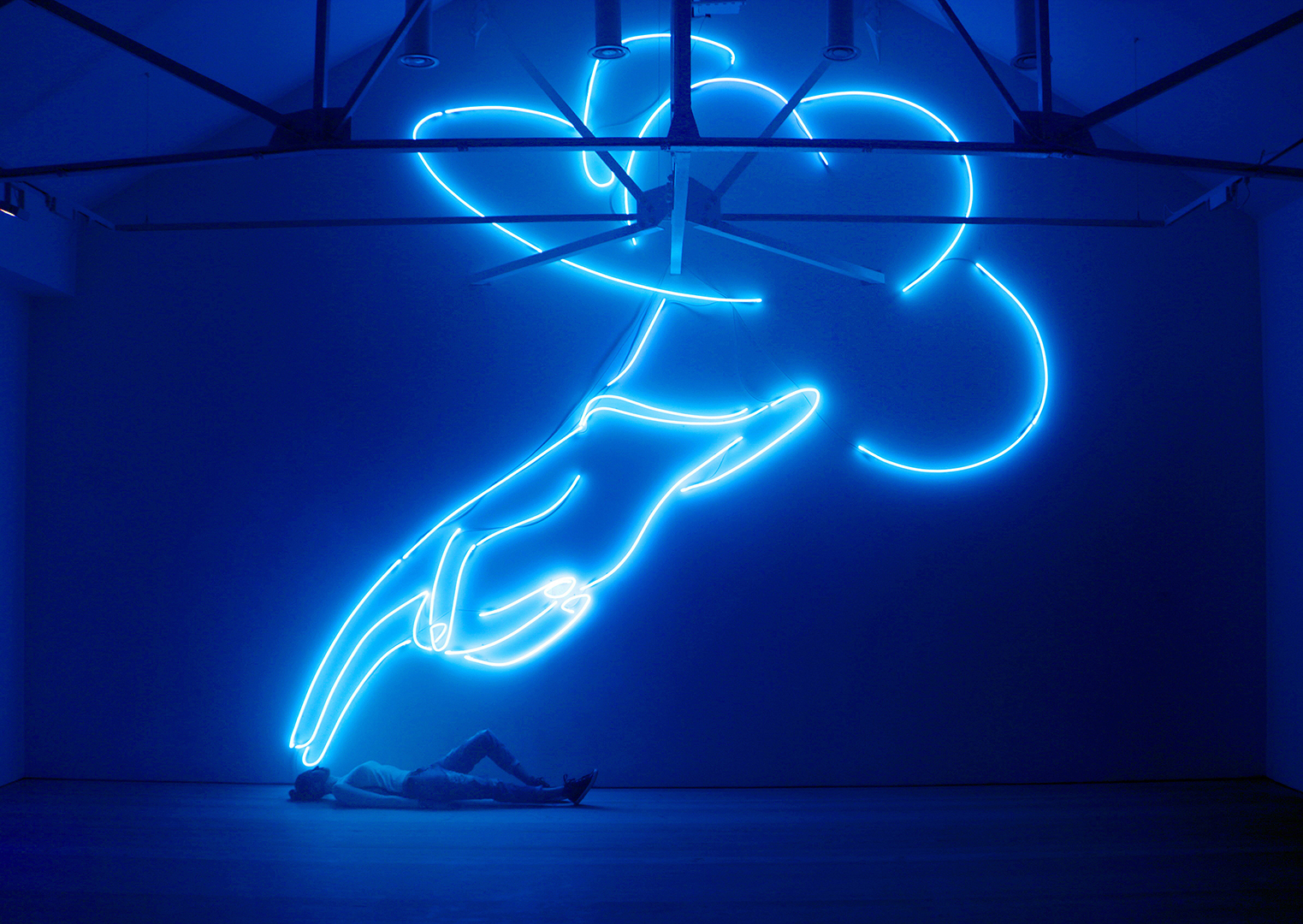
In this context, the election of Stepan Ryabchenko, an artist of the new generation working at the intersection of digital art, conceptual architecture, sculpture, light installations, graphics, and photography, underscores the Academy’s openness to new forms of artistic thinking and visual experimentation.
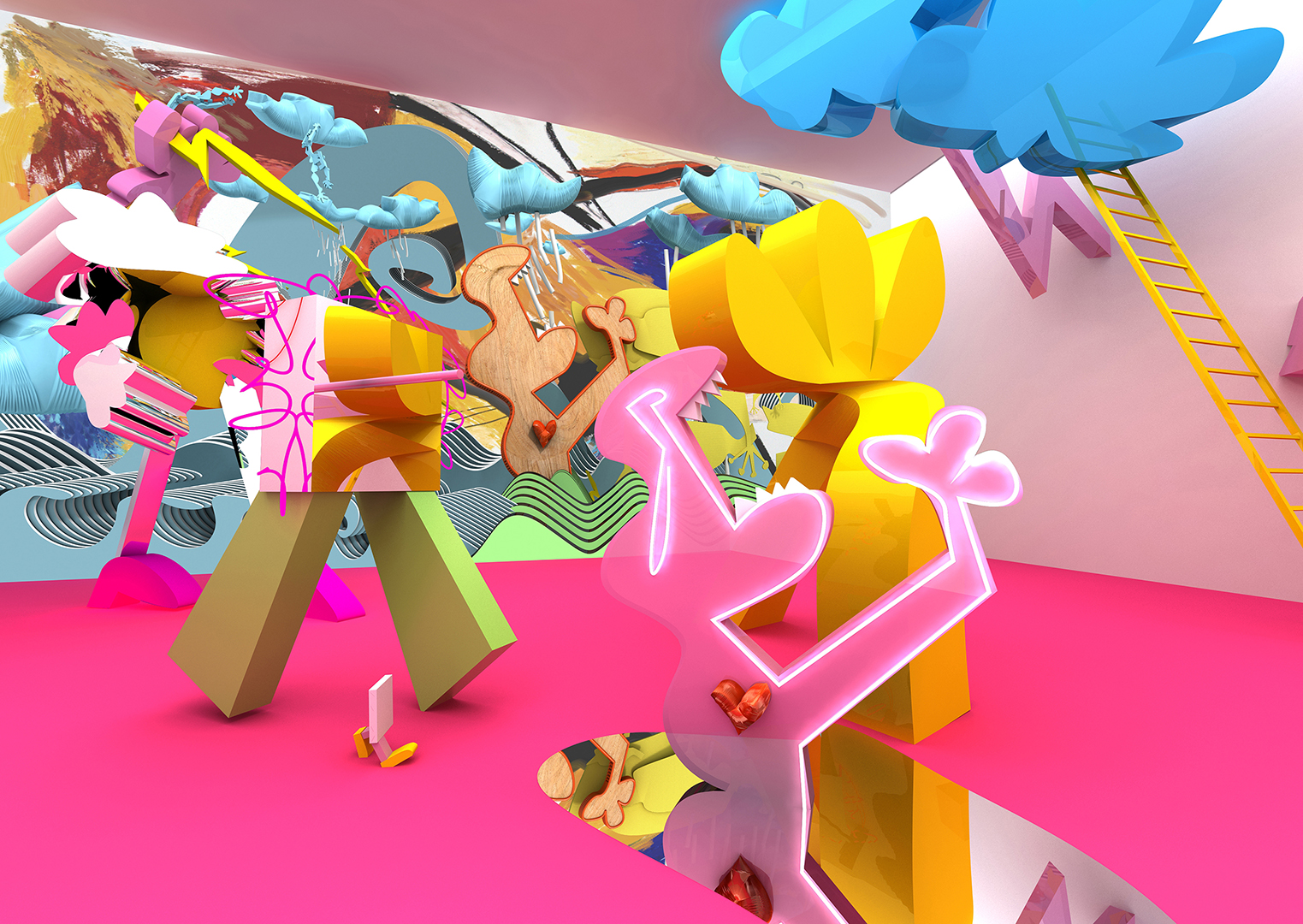
Stepan Ryabchenko is a leading figure of Ukrainian contemporary art and one of the most prominent international artists in the field of digital and media art. His artistic practice constructs a cohesive visual mythology — imaginary worlds populated by fictional beings, fantastical life forms, and metaphysical landscapes governed by internal laws created by the artist himself. In these autonomous visual realities, the boundaries between imaginary and real, organic and virtual, myth and technology dissolve — giving rise to a new artistic nature of the 21st century.
His works have been exhibited at major Ukrainian institutions, including PinchukArtCentre, Mystetskyi Arsenal, National Art Museum of Ukraine, Ukrainian House, Museum of Contemporary Art of Odesa, M17 Contemporary Art Center, and the Modern Art Research Institute. Internationally, he has represented Ukraine at such esteemed venues as Saatchi Gallery (London), MAXXI (Rome), Albertina Modern (Vienna), Ludwig Museum (Budapest), Moderna Galerija(Ljubljana), Danubiana Meulensteen Art Museum (Bratislava), Ars Electronica Center (Linz), and the Ukrainian Institute of America (New York) — part of an extensive geography of projects.
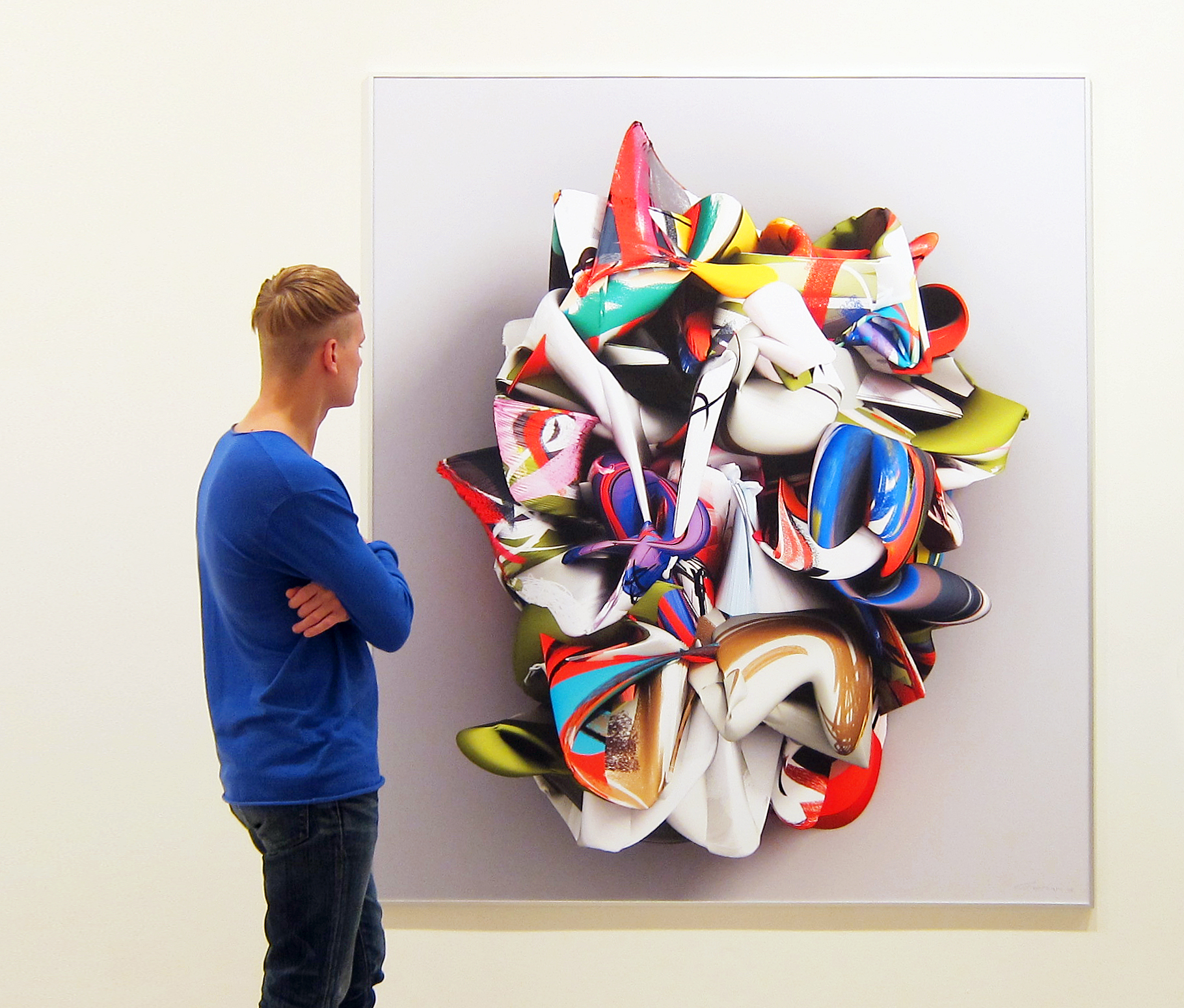
In 2021, Ryabchenko was named among the top 15 digital artists in the world by the British platform Electric Artefacts. His accolades include: the Art-Act Prize at the First Ukrainian Triennial of Abstract Art (2010), the Kyiv Sculpture Project Prize (2012), inclusion in Forbes Ukraine: 30 Under 30 (2015), winner of the competition for the sculptural symbol of Odessa Airport (2019), finalist of the Tampa International Airport Public Art Project (USA, 2020), Mykhailo Bozhiy Prize (2022), among others.
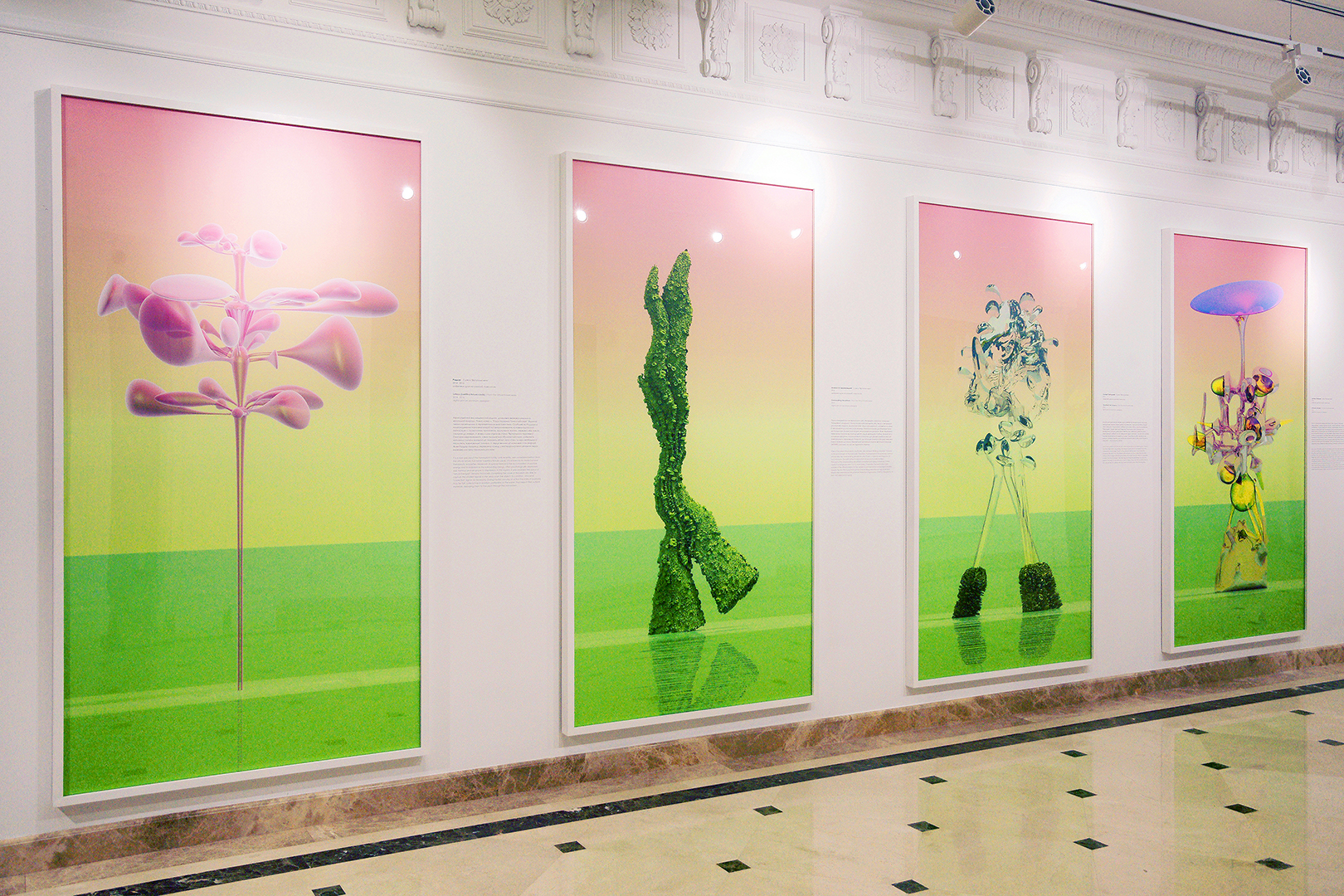
His works are housed in the collections of leading Ukrainian museums and contemporary art centers — including the Odesa National Art Museum, Museum of Contemporary Art of Odesa, M17 Contemporary Art Center, Modern Art Research Institute, Korsak Museum of Modern Ukrainian Art, Cherkasy Art Museum, Park3020, and Artsvit Gallery. Internationally, his art is included in the Art Collection Telekom (Germany), Imago Mundi – Luciano Benetton Collection (Italy), Danubiana Meulensteen Art Museum (Slovakia) — as well as numerous public and private collections worldwide, including the Abramovych Foundation, Grynyov Art Collection, Stedley Art Foundation, Adamovskiy Foundation, Zenko Foundation, and Voronov Art Foundation.
“The work of Odessa-based artist Stepan Ryabchenko belongs to those phenomena that shape the space of contemporary Ukrainian art, defining its scope and direction. The aesthetics of new media art, in which he works, not only open up new dimensions of creativity but demand special qualities from the artist: imagination, spatial perception, and those ‘metamorphoses of the image’ that reveal and visualize the strange connections between real and virtual, authentic and imagined… It is no coincidence that one of the key themes that captivates the artist is ‘new nature,’ where myths and fantasies intersect with impressions of the surrounding world and its unexpected projections,” notes art critic Halyna Skliarenko.
Stepan Ryabchenko’s election to the National Academy of Arts of Ukraine is not only recognition of his significant contribution to the evolution of contemporary Ukrainian art — it is also a testament to Odessa’s ongoing role as a source of innovative artistic thought, capable of shaping new visions of Ukraine in the global cultural arena. This is a momentous cultural event for a city that has played a vital role in defining the artistic landscape of the country for over two centuries.
